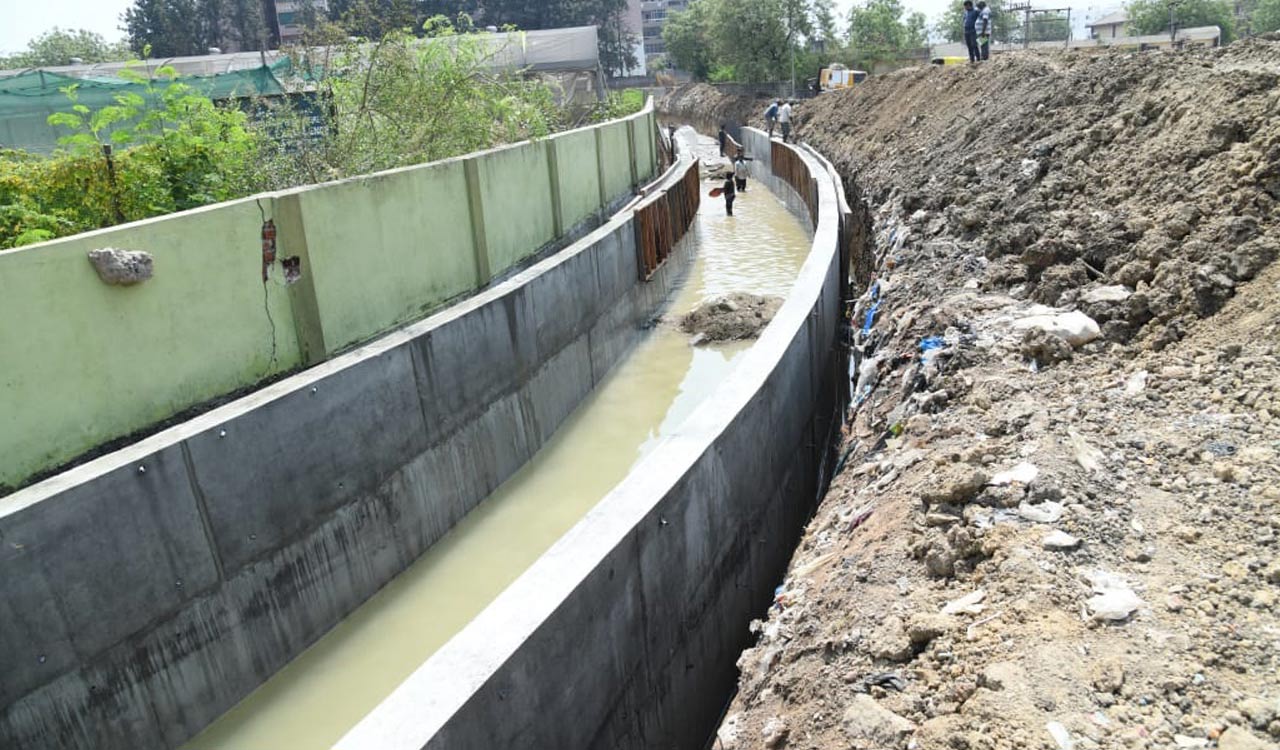Launched by the previous BRS government in 2022, systematic interventions helped address woes of ‘bastis’ in the low-lying areas, in particular
Published Date – 08:00 AM, Wed – 13 December 23

SNDP aims to mitigate urban flooding by revamping the storm-water drain network in the Hyderabad.
Hyderabad: The long-standing problem of urban flooding in Hyderabad, a challenge that has persisted over the decades and posed recurrent difficulties every monsoon, has been alleviated in several parts of the city. Systematic interventions in the last decade and the Strategic Nala Development Programme (SNDP) have eased the woes of ‘bastis’ in the low-lying areas, in particular.
The Congress has also mentioned this issue in their manifesto and promised to “make Hyderabad a flood-free city and modernise the canal system.”
However, this vision is shared by the SNDP which was already launched in 2022. The project aims to mitigate urban flooding by revamping the storm-water drain network in the city and it was launched by the previous BRS government after the dire consequences faced during the 2020 Hyderabad floods. A total of Rs 985.45 crore was sanctioned in Phase I, with authorities planning to initiate Phase II.
While 36 works were proposed within the GHMC limits using Rs 747.45 crore, the other 21 were from neighbouring Urban Local Bodies with Rs 238 crore, taking the total number to 57. Works in around 26 areas were completed in the GHMC region.
From Bathula Cheruvu to Injapur Nala, Nalla Pochamma Temple Bridge, Al-Jubail Colony in Falaknuma, Bandlaguda Cheruvu to Nagole Cheruvu, and another bridge near Nagamaiah Kunta Nala are some areas where work was undertaken. The stormwater drainage system in these areas was revamped with the restoration of chain links of tanks and the identification of alternative paths to divert the rainwater runoff to low-lying areas. As some drains in the city were earlier neglected and encroached upon, authorities had to demolish structures erected over them, wherever possible.
In addition to remodeling major drains passing through the city and building box drains, the BRS government built multiple retaining walls to ensure they do not overflow after heavy rainfall. Desilting works were also undertaken in multiple areas. As a result of these multiple interventions, areas, where work was completed, were largely free from flooding during the monsoon in 2022 and 2023.



